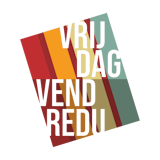Year: 2005
Place: Ghent
Publisher: Snoeck
Edition: 1st
Language: EN
Pages: 280
Condition: As New
Cover condition: As New
Binding: HC
Illustrated.
- Contents
Foreword
Introduction
1 The Rules of Art
Luc Tuymans
Jef Geys
Chantal Akerman
Joëlle Tuerlinckx
2 Painting
2.1 Post-expressionism and Animism
Armand Vanderlick
Henri-Victor Wolvens
2.2 Neo-realism and "Ecole de Paris"
Jos Verdegem
2.3 Fantastic or Magical Realism
Octave Landuyt
Jef van Tuerenhout
2.4 The Origins of Geometric Abstraction or Concrete Àrt
Jozef Peeters
Anne Bonnet
Victor Servranckx
Jo Delahaut
Gaston Bertrand
Joseph Lacasse
Luc Peire
Michel Seuphor
Guy Vandenbranden
2.5 Abstract Expressionism or Lyrical Abstraction
Pierre Vlerick
2.6 Existential Painting
Jan Burssens
2.7 New Figuration
Roger Raveel
2.8 Narrative Painting
Fred Bervoets
Frank Maieu
2.9 Hypelrealism
Roger Wittevrongel
Antoon De Clerck
Guy Degobert
2.10 Fundamental Painting
Raoul De Keyser
Luc Tuymans
Hugo Duchateau
2.11 Transavant-garde
Jean Bilquin
3 Sculpture
3.1 Existential sculpture
Paul Van Gysegem
3.2 Assemblage
Camiel Van Breedam
4 Conceptual Art
4.1 Neo-dadaism
Marcel Broodthaers
4.2 Art as social criticism
Roland Van den Berghe
4.3 Art and Language
Guy Rombouts
Fred Eerdekens
4.4 Body Art
Liliane Vertessen
Merlin Spie
4.5 Video Art
Marie-Jo Lafontaine
5 Post-Modernism
5.1 Art and Mass Culture
Wim Delvoye
5.2 Ugly Realism
Werner Mannaers
6 From the Angle of the Medium
6.1 Bronze
George Grard
Roel D'Haese
Jan Vercruysse
6.2 Graphic Arts
Enk De Kramer
Ingrid Ledent
6.3 Multimedia as New Media
Peter De Cupere
7 Reflexion on Art and Science
Panamarenko
Koen Vanmechelen
Conclusion
Colophon.
- This book is the first of a series in which Willem Elias focuses on Belgian art movements that have emerged since 1945. Containing numerous images, the book highlights the significance of Belgian art since 1945 within an international context.
- Elias' approach is marked by its diversity: philosophical, art historical, art critical and technical aspects ore discussed. His opproach thereby mirrors the American theory (DBAE) of art education, which assumes that art is best understood when viewed from a variety of angles and disciplines. This book is intended for all those interested in contemporary art. It will be of particular interest to specialists wishing to refresh their memory, educational staff intent on communicating the rules of art and art students.
